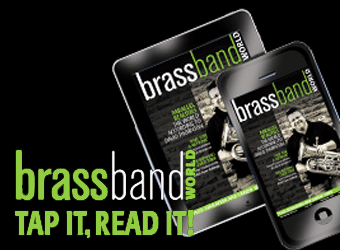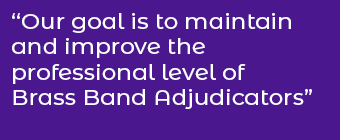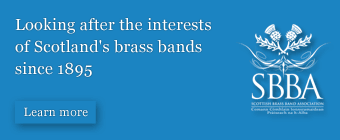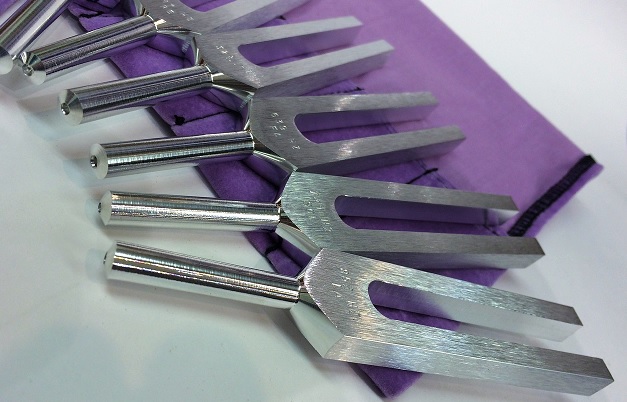
Not all tuning needs are as easily sorted out...
At some point in their contesting lives all bands will receive adjudicator’s remarks mentioning suspect tuning or intonation – from the very best Championship Section contenders to those on the first rung of competition.
As one of the banding movements most respected adjudicators, conductors and performers, Alan Morrison has therefore taken a closer look at some of the tricks of the trade a young MD can use to tackle a perennial problem to come up with some solutions that may help now and in the future.
What's the difference between tuning and intonation?
Let me take you back to the early 1970’s and the National Youth Brass Band of Great Britain, when the MD Geoffrey Brand was talking to the young players and asked that very question.
After a few moments of silence a shy 13 year old naively raised his hand. Mr. Brand looked at him and said, “Yes young man?”
Out came the response; “Tuning is done by the instrument and intonation is done by your lips!”
Once the howls of laughter had died down and with Mr. Brand perhaps sensing my embarrassment, he said; “The boy is on the right lines if not quite articulating it correctly.”
Far from perfect
So, to be slightly more articulate nearly 50 years later, the tuning of an instrument can be altered primarily by moving its slides: If you lengthen the tubing you flatten the instrument and if you shorten it, you sharpen it. And not just the main tuning slide either, but all valve slides too.
Meanwhile, poor intonation can be caused by the player not filling the instrument with air or by blowing notes out of tune.
So, first of all, it’s important to understand the instruments and find out which notes are flat or sharp and what you need to do to correct this.
It’s worth remembering though that brass instruments themselves are far from perfect in intonation.
So, first of all, it’s important to understand the instruments and find out which notes are flat or sharp and what you need to do to correct this.
Up to the conductor?
Professional musicians will tell you it’s the responsibility of the individual to be in tune. However, in brass bands it seems to be the conductor’s responsibility to identify the problem and find the answer.
For this approach to work a conductor therefore needs to be armed with a keen sense of hearing, technical knowledge and plenty of ingenuity and inspiration in order to come up with solutions!

Every player knows the feeling...
So where do we start?
Band tuning has to be an ongoing crusade that needs to be given time to be tackled on a regular basis: It’s not something that can be sorted by a quick run round of notes before going on stage.
It has to be structured and thought out, although there are two starting points that need to be considered.
First: It’s worth finding out which instrument is the flattest in your band.
This can be identified by any that have all the slides fully pressed home - restricting it to being tuned in one direction.
As stated, to flatten an instrument, you need to extend the length of tubing by pulling slides - to sharpen, you go the other way. That’s impossible if all slides are already all the way in, so you need to have instruments with some ‘play’ either way on the main slide.
So, as on ongoing exercise in rehearsal, the tuning of each instrument through the moving of tuning slides is recommended, and although this is far from the final solution it’s the best starting point!
Second. Percussion is an increasingly important factor and a band needs to be brought in line to the tuned percussion instruments such as xylophone, marimba or glockenspiel.
As bands tend to be sharp, it’s beneficial to try to bring the pitch down to the percussion. I’m reliably informed that most tuned percussion instruments are manufactured to A442, although this is not 100% standard.
Also, older tuned percussion instruments can flatten in pitch the more they are played.
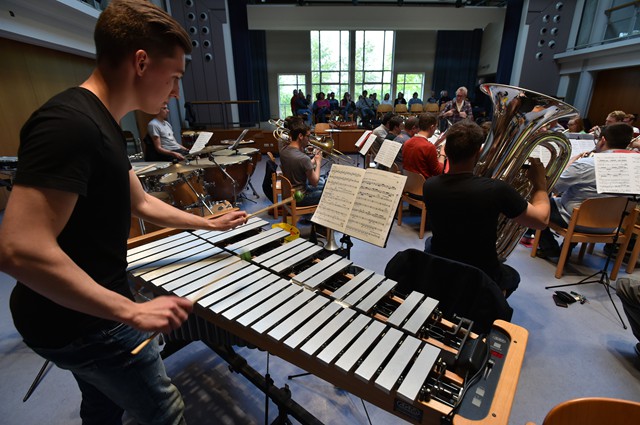
Percussion tuning is becoming an increasingly important issue
So, as on ongoing exercise in rehearsal, the tuning of each instrument through the moving of tuning slides is recommended, and although this is far from the final solution it’s the best starting point!
If this is worked at constantly it will provide a sound base on which to build other techniques to fine tune notes across the band and within sections.
Things to consider:
It has to be remembered that so many things can affect tuning and intonation.
1. Temperature
Extreme variations of temperature will affect instruments. It’s essential therefore that they are fully ‘warmed up’ before undertaking any tuning procedures.
2. Atmosphere
Similarly, a damp or dry atmosphere will have an effect, so keep the room you practice in ventilated and consistent.
3. Player standard
Generally speaking, experienced players play more consistently in tune and can provide the same tuning note. Also, techniques of playing, such as breath support, embouchure security and the level of warm up can seriously affect tuning.
Generally speaking, experienced players play more consistently in tune and can provide the same tuning note. Also, techniques of playing, such as breath support, embouchure security and the level of warm up can seriously affect tuning.
4. Instrument/mouthpiece
A modern instrument may well be more in tune with itself than older models, whilst deep mouthpieces tend to play flatter and shallow mouthpieces sharper.
Also, if a mouthpiece has a thin or thick shank then this will alter the length of tubing, so the tuning can be affected. If the mouthpiece stands out from the leadpipe then the main tuning slide needs to compensate by being further in. The opposite applies if the mouthpiece sinks into the leadpipe.
5. Position of slides - both main and valves.
Always check that they haven’t been moved accidently.
6. Player listening
A huge benefit if you can get players playing in unison. In particular, ask them to listen to the overall sound and try to blend and merge with colleagues. It increases player confidence and makes them more aware.
7. Register
Playing in extreme registers can affect tuning both through instrument limitation and player intonation.
All brass instruments are sharp in the lower register (which is why triggers and 4th valve compensating systems were invented). These should be used to the full.
Also, tension in upper registers will affect tuning if players are not comfortable in the stratosphere.
Strategic swapping of parts can provide comfort as long as the resultant sound is authentic and the tone is close to the original instrument. For example, a horn could take over high baritone parts and vice versa or a euphonium could help high tuba parts etc.
Do not be afraid to swap parts as it’s not against the rules. Moreover, you have to use the resources of your band to achieve the best results.
Strategic swapping of parts can provide comfort as long as the resultant sound is authentic and the tone is close to the original instrument. For example, a horn could take over high baritone parts and vice versa or a euphonium could help high tuba parts etc.
8. Dynamics and dynamic changes
Extreme dynamic ranges can cause intonation concerns by overblowing in upper levels and air starvation in lower.
Changes of dynamic often lead to intonation changes because players lose control of the air column, particularly when making a diminuendo.
Remember - the dynamic change is achieved by the speed of air and not the amount of air put into the instrument.
Potential solutions?
Some hopefully helpful answers have already been offered above, but what other techniques of tuning can be used across a band?
1. Moving of slides
Obvious and always appropriate. However, if the ground work has been done in previous months of rehearsal the main slides should only need small adjustment. Don’t be afraid to move valve slides to fine tune individual notes.
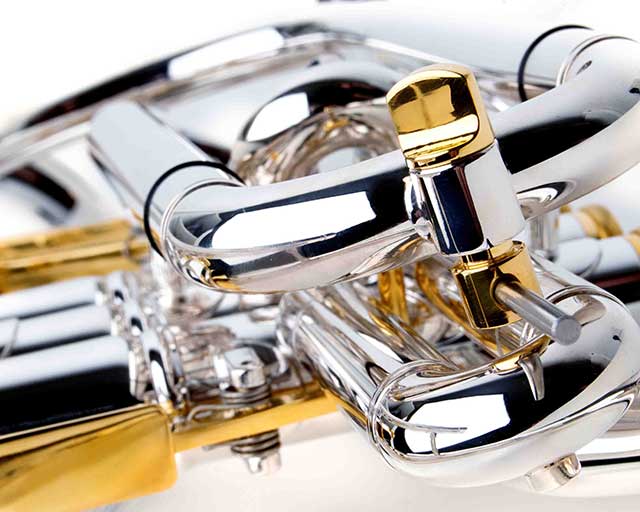
Don't be afraid to make move all the slides
2. Alternate fingering and harmonics
Each harmonic of a series has its own peculiar properties; some flat, others sharp and most, thankfully, in tune.
It’s always wise to try and use alternate fingering to match harmonics on different instruments, particularly with those in different pitches. Try to match fingering and get players to learn all alternate fingering options.
3. Swap notes
It’s always advantageous to use the strengths of the players you have in front of you.
Sometimes this means swapping parts around to gain the best advantage – from odd notes to longer sections that sound similar and are at the same pitch (baritones and trombones for instance). It’s sometimes easier to match harmonics by swapping the parts around.
Sometimes this means swapping parts around to gain the best advantage – from odd notes to longer sections that sound similar and are at the same pitch (baritones and trombones for instance). It’s sometimes easier to match harmonics by swapping the parts around.
4. Reduce numbers
The more players you have playing the same part or note, the more chance of it being out of tune.
Ultimately you can leave it to one player if necessary, or certainly reduce the numbers.
5. Ask players to listen
One of the best ways of getting players in tune is to ask them to listen closely to colleagues playing the same note.
Get them to blend and match sounds as closely as possible. This often works well and does save some time. It encourages confidence as a test and should be encouraged. The age old use of scales played in unison helps a great deal as a listening tool.
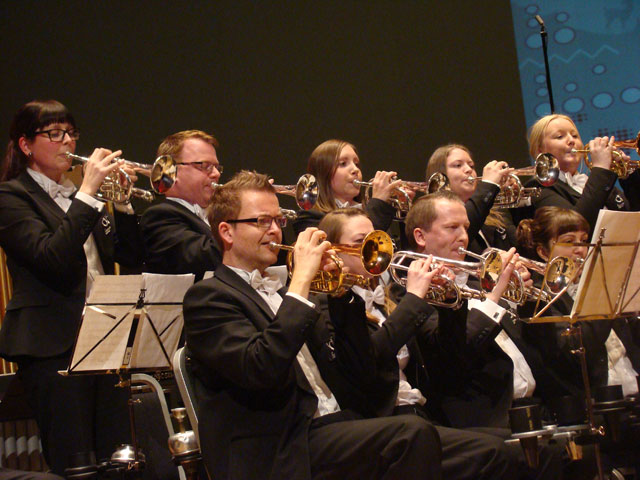
All blended together: The best bands make it sound so good...
6. Air flow and breath support
Poor intonation comes from weak air flow and support. Encourage players to fill their instruments with air whatever the dynamic. It’s also easier to tune players as it helps them produce the same note time after time.
7. Use of vibrato
In isolated instances tuning problems can sometimes be helped by the use of vibrato to warm the sound – especially with another player. Too much though and it can sound terrible – so be careful!
In isolated instances tuning problems can sometimes be helped by the use of vibrato to warm the sound – especially with another player. Too much though and it can sound terrible – so be careful!
8. Nerves
Nerves can be a major factor. It’s always helpful to encourage players to breathe deeply before going on stage and keep the saliva glands working. Don’t get ‘dry’ in the mouth and try and encourage an enjoyment attitude with your band to the whole playing experience.
9. ‘Go to’ players
It’s helpful to identify the players that have good technique and full air support. These can be your ‘go to’ players when problems occur and solutions are hard to come by.
What you need:
So these are the things you need to help your band play in tune:
1. Good ears
You need to be able to identify poor tuning and decide which way slides have to be moved. In certain circumstances electric tuners are useful, but these don’t always take into account differing tonal qualities and timbres which can vary a lot to give false readings.

It helps of course...
2. Good instruments and mouthpieces
Ensure your players keep their instruments well maintained with greased slides to allow free and easy movement either way. All pipes and mouthpieces should be regularly cleaned with a pull-through.
3. Good sounding players
Make sure that whatever the standard of your band you have some players that can play a consistent note throughout the range.
4. Patience
From all concerned, but particularly the players in the band who may have to wait as you work with others to get things right. You all have to buy into the regime to make it work.
This is all about improvement – something that helps your band as a whole.
Final observations and tips:
1. Avoid asking players to try and blow notes into tune. It may only solve the problem temporarily and is very difficult for inexperienced players to do.
2. If two players are very closely in tune, but not quite, it may be difficult to hear which way one has to go. Try pulling the slide out a long way on one player to make it really flat, then work your way back again.
Remember though it is not an exact science and it could sound different at other times - so keep checking it.
Remember, it’s an ongoing evaluation that will eventually master a problem that will definitely make your band sound so much better.
3. It is always advisable to tune upper cornets, particularly soprano and principal cornet very slightly sharp to make the sound bright.
4. If tuning a major triad always remember that the third of the chord is the important note and needs to be on the bright side.
5. Players should be encouraged to make sure their slides are in the same position that they were last moved to.
If moved for playing with other bands or even for regular cleaning and maintenance, instil the importance of putting them back in place. Mark your slide positions with a pencil!
Tuning is not the only piece of criteria that will win you a contest, but if you can get your band somewhere near in tune you will not be far away.
Remember, it’s an ongoing evaluation that will eventually master a problem that will definitely make your band sound so much better.
Copyright: Alan Morrison 2018
About the author:
Alan Morrison has long been regarded as one of the brass band movement’s most respected players, conductors and adjudicators in a career that spans over 50 years.
A former principal cornet of Grimethorpe Colliery Band and Brighouse & Rastrick, a highly successful freelance conductor and a former Chairman of the Association of Brass Band Adjudicators, he has also been a leading ABRSM examiner and has adjudicated at all levels.










